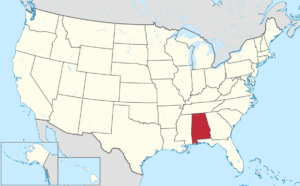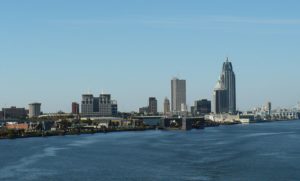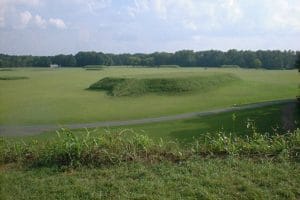Introduction:
Alabama is a state in the southeastern region of the United States. It is bordered by Tennessee to the north, Georgia to the east, Florida and the Gulf of Mexico to the south, and Mississippi to the west.

Alabama is the 30th largest by area and the 24th-most populous of the U.S. states. Alabama’s capital is Montgomery.

The largest city by population is Birmingham, which has long been the most industrialized city. The oldest city is Mobile, founded by French colonists in 1702 as the capital of French Louisiana.

From the American Civil War until World War II, Alabama, like many states in the southern U.S., suffered economic hardship, in part because of its continued dependence on agriculture. Following World War II, Alabama grew as the state’s economy changed from one primarily based on agriculture to one with diversified interests. The state’s economy in the 21st century is based on management, automotive, finance, manufacturing, aerospace, mineral extraction, healthcare, education, retail, and technology.
Origins of the State Name:
The European-American naming of the Alabama River and state was derived from the Alabama people, a Muskogean-speaking tribe whose members lived just below the confluence of the Coosa and Tallapoosa rivers on the upper reaches of the river. In the Alabama language, the word for a person of Alabama lineage is Albaamo. The first usage appears in three accounts of the Hernando de Soto expedition of 1540. As early as 1702, the French called the tribe the Alibamon, with French maps identifying the river as Rivière des Alibamons.
History:
Pre-European Contact:
Indigenous peoples of varying cultures lived in the area for thousands of years before the advent of European colonization.

Trade with the northeastern tribes by the Ohio River began during the Burial Mound Period (1000 BC–AD 700) and continued until European contact.
The agrarian Mississippian culture covered most of the state from 1000 to 1600 AD, with one of its major centers built at what is now the Moundville Archaeological Site in Moundville, Alabama. This is the second-largest complex of the classic Middle Mississippian era, after Cahokia in present-day Illinois, which was the center of the culture.

Among the historical tribes of Native American people living in present-day Alabama at the time of European contact were the Cherokee, an Iroquoian language people; and the Muskogean-speaking Alabama (Alibamu), Chickasaw, Choctaw, Creek, and Koasati. While part of the same large language family, the Muskogee tribes developed distinct cultures and languages.
European settlement:
With exploration in the 16th century, the Spanish were the first Europeans to reach Alabama. The expedition of Hernando de Soto passed through Mabila and other parts of the state in 1540. More than 160 years later, the French founded the region’s first European settlement at Old Mobile in 1702. The city was moved to the current site of Mobile in 1711. This area was claimed by the French from 1702 to 1763 as part of La Louisiane.
